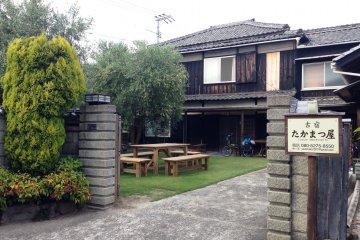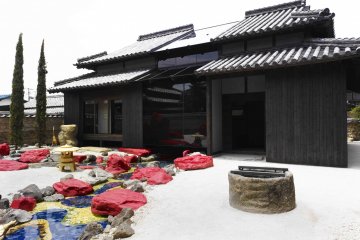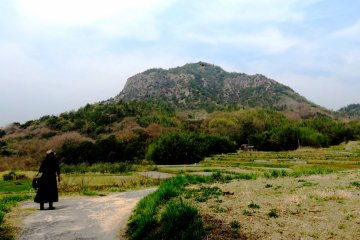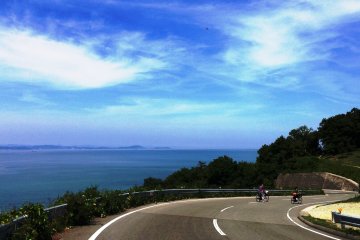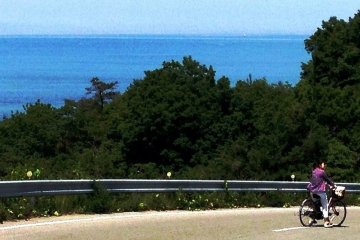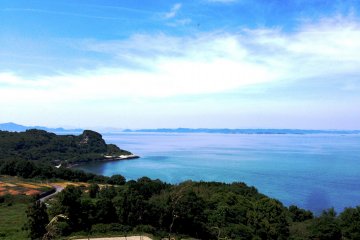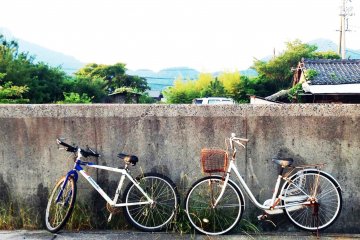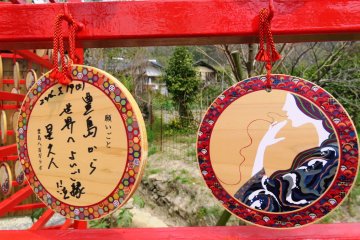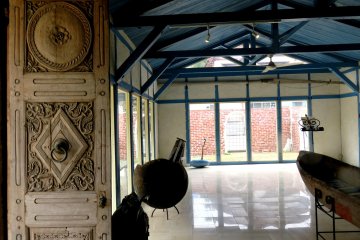Island Time. The very phrase evokes images of relaxed slowness, where life moves to the lapping of the changing tides, or the gentle sound of a pebble bouncing off the still waters at dawn. Making the decision to leave the mainland means you have to slow down, step by step. From the plane to the train, and from the ferry to the sound of your own footsteps, each change represents a steady slowing of your heartbeat, to the rhythm of the butterflies that fly overhead. For when you get here, there is little movement, save for those creatures that nature has provided.
When I told one of the flight crew that I was going to the islands of the inland sea, her eyes lit up, and said, “Teshima is famous for lemons, they are juicy and fragrant”. Lemons are known for their sun-loving habits, so anything less than full sun and a frost-free winter will produce less fruit. It is then no wonder that the glistening seas that define these islands are also known by the moniker of Japan’s Mediterranean. With more sunny days than the iconic apple orchards of Aomori Prefecture (known as the “blue forest” to the Japanese), the lemons here are sun-kissed to the happiest yellow hues.
Like all good things, the lemons here take their own time to mature, distilling the sunshine as the earth orbits around the sun 3 times before bearing its fruit. Time only has meaning if there are markers. Like Christmas or New Year, they draw a line in the continuum of life, giving time to pause, to reassess life. Lemons also capture time. The hours of sunshine are distilled and packaged in a single yellow fruit. The younger generation who left this island for the big cities may come back during Obon, the festival of the dead, to pay their respects, walking right past these markers of time.
What is the link between lemons and cycling? They both like the sun, making the idea of cycling past lemon orchards with the sun behind you a winning combination. I had the opportunity of visiting Teshima twice over two years, and it didn’t rain once. As long as you come here outside the rainy season in June, expect clear skies and light breezes, especially in spring and autumn. Along with places like Shimanami Kaido, these reclusive islands are a magnet for cycling enthusiasts, giving even single travelers the opportunity to socialize over a meal in the olive tree courtyards of inns like Takamatsuya. On my first trip, I met a honeymoon couple from Perth, island hopping with their own bicycles on the large car ferries that connect these islands with major cities like Takamatsu.
If you haven’t brought your own two-wheeler, drop by at the tourism information office to the right of the ferry terminal, where the relaxed folk who man the white booths can look after your luggage and rent a standard or electric bicycle, with the latter costing ¥1000 for up to 4 hours, with a surcharge of ¥100 for every hour thereafter. Many visitors come to see Teshima Art Museum or some of the other art installations on the other side of the island, meaning you will need to navigate some hills. While it is possible to use a standard bicycle, they are best left to regular hill climbing enthusiasts. If you are arriving during the Setouchi Triennial, it is best to come early in the morning, as the electric bicycles disappear quickly.
Setouchi Karen is a recent entrant to the Teshima cycling scene, giving visitors an even easier option, the electric scooter. Combining the wind in your hair feeling with the silence that puts you in tune with your surroundings, you can easily see all of Teshima in half a day. The electric scooters start from ¥3000, and you can even book it online. You need a credit card and an international driver’s license to get the keys to these machines and this is one of the few places in Japan that doesn't take cash.
The bike ride from Ieura Port to the remote south coast takes less than an hour on an electric bicycle. Once you leave the township, there is only one road that snakes through the tree-studded hills. Soon the trees fall away and a beautiful vista opens up. You can see kites circling over the wind currents on one side while keeping an eye for the oddly deserted temple on the other side. The roadside strawberry stalls and art installations will conspire to slow you down, and unlike the minibusses that circle the island, you can stop and take it all in, as many times as you like. Here you don’t have to go island hopping to get the best produce; it is delivered by boat and tractor to your plate from farms near and far. Various cafes dot the road, particularly along the coast or huddled among townships with scenic views. You only wished that time did stop, so you can linger over a long lunch. Many visitors come here on day trips whose schedules are tied to the ferry timetable, but for those wanting to stay overnight, the peace of the moonlight glistening over the calm shoreline can’t be beaten.




